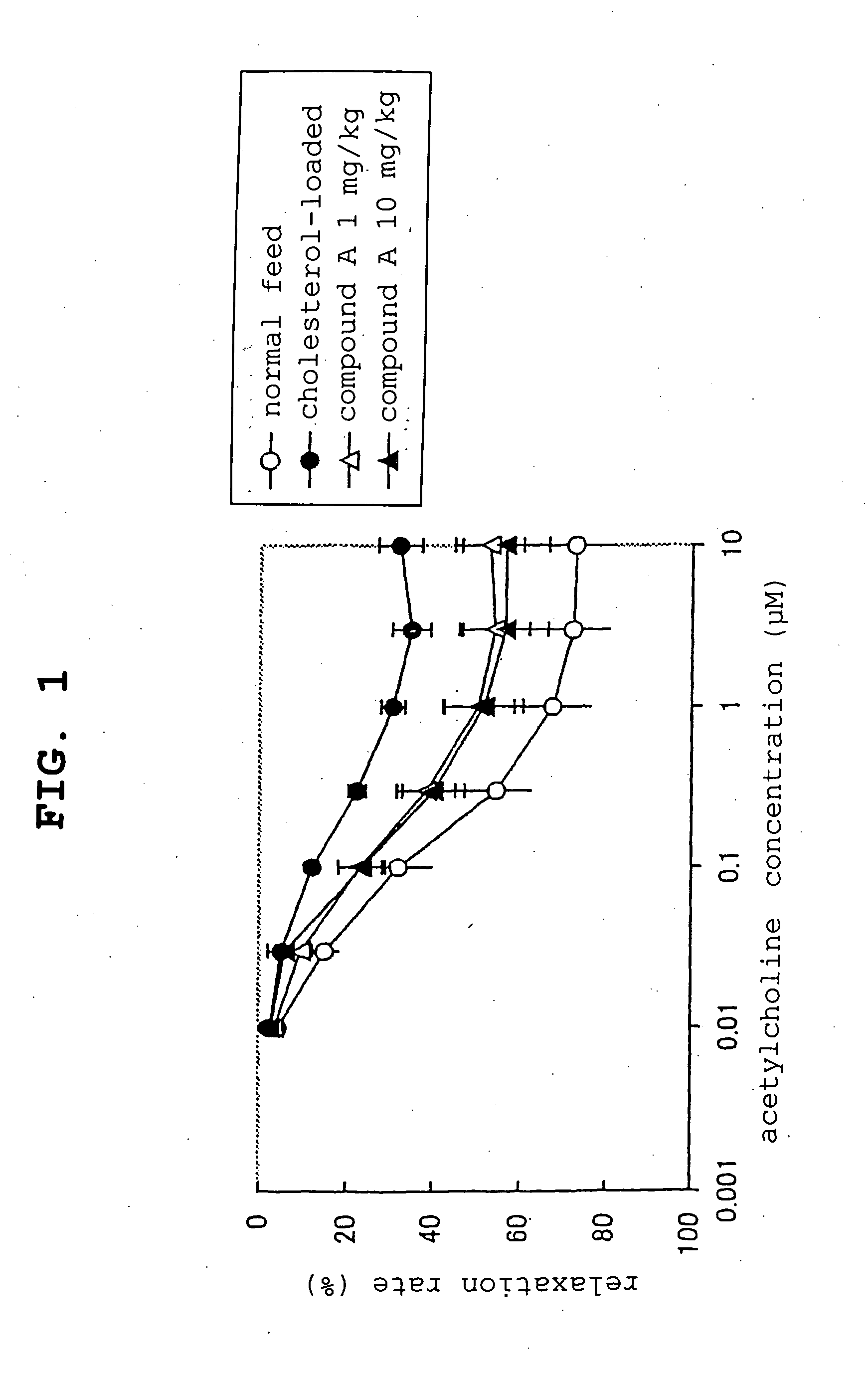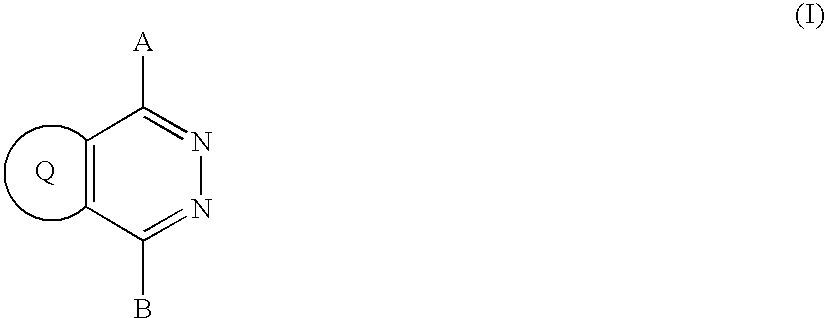Specific nad(p)h oxidase inhibitor
a nad(p)h oxidase inhibitor and specific technology, applied in the direction of biocide, drug composition, metabolic disorder, etc., can solve the problems of side effects due to lower immune function and the lik
- Summary
- Abstract
- Description
- Claims
- Application Information
AI Technical Summary
Benefits of technology
Problems solved by technology
Method used
Image
Examples
experimental example 1
NAD(P)HOxidase Inhibitory Effect (Method)
[0046] 44 mM glucose was added to Human Umbilical Vein Endothelial Cells (Bio Whittaker, hereinafter to be indicated as “HUVEC”), and cells were cultured for 8 days. Then, a lysis buffer containing a surfactant, Triton-X Nonidet P-40, was added, and interleukin-8 (hereinafter to be indicated as “IL-8”) in the cell lysate, which had been produced by NAD(P)H oxidase was measured by an enzyme-linked immuno solvent assay. The test compound was added one day before glucose addition.
[0047] The inhibitory rate was calculated from the following formula:
inhibitory rate (%)=100−[(A−C) / (B−C)]×100
[0048] wherein A is IL-8 production of a cell cultured in the presence of 44 mM glucose with addition of the test compound, B is IL-8 production of a cell cultured in the presence of 44 mM glucose without addition of the test compound, and C is IL-8 production of a cell cultured in the absence of 44 mM glucose and the test compound. The IC50 value was calcu...
experimental example 2
NAD(P)H Oxidase Inhibitory Effect
[0049] Streptozotocin (40 mg / kg) dissolved in 0.05 M citric acid buffer (pH 4.5) was administered into the tail vein of male Wistar rats (Japan SLC) to prepare diabetic rats. At 1 week to 8 weeks from the intravenous injection of streptozotocin, blood was drawn from the tail vein using a capillary treated with heparin, which was immediately cooled with ice and centrifuged at 3000 rpm, 15 min, 4° C. to give serum. The blood glucose level was measured by enzyme assay using a glucose measurement kit “GLU neo sinotest” (sinotest) and a microplate reader (SPECTRA MAX250, Molecular Devices).
[0050] The test compound (10 mg / kg) was orally administered to diabetic rats once a day for 3 days. The NAD(P)H oxidase activity was measured by the following method, which was modified by the method of the David. G. Harrison et al. (J. Clin. Invest. 91, 2546-2551, 1993), at 4 days from the start of the test, with superoxide anion production in aorta as an index.
[00...
experimental example 3
Effect on Normal Rat NAD(P)H Oxidase
[0056] The test compound (10 mg / kg) was administered to normal male Wistar rats (Japan SLC) for 3 days, and the production amount of superoxide anion in the aorta was measured in the same manner as in Experimental Example 2.
[0057] The inhibitory rate (%) was calculated by the following formula:
inhibitory rate (%)=100−(A / B)×100
wherein A is the standardized chemiluminescence value of the rats administered with the test compound, and B is the standardized chemiluminescence value of the rats without administration of the test compound (control group).
[0058] The results are shown in Table 4.
TABLE 4NAD(P)H oxidase inhibitory effect in normal rat aortachemiluminescenceinhibitorytest compound(×105 RLU / wet weight of aorta)rate (%)control group3.96 ± 2.9—compound A3.89 ± 3.01.8compound B4.01 ± 6.0−1.3
mean ± standard error
[0059] The compounds A and B did not affect the superoxide anion production in normal rat.
PUM
 Login to View More
Login to View More Abstract
Description
Claims
Application Information
 Login to View More
Login to View More - R&D
- Intellectual Property
- Life Sciences
- Materials
- Tech Scout
- Unparalleled Data Quality
- Higher Quality Content
- 60% Fewer Hallucinations
Browse by: Latest US Patents, China's latest patents, Technical Efficacy Thesaurus, Application Domain, Technology Topic, Popular Technical Reports.
© 2025 PatSnap. All rights reserved.Legal|Privacy policy|Modern Slavery Act Transparency Statement|Sitemap|About US| Contact US: help@patsnap.com



